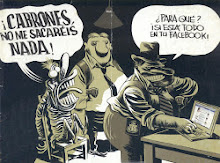Colette Bancroft
Back in 1982, when they both published their first mystery novels, did Sue Grafton and Sara Paretsky think they were starting series that would still be charting on the bestseller lists 33 years later?
"Well, I was cheeky enough to snag the alphabet," Grafton says of her series, which began with A Is for Alibi and, this month, reached the one-letter title X. "I had high hopes and no expectations, so it's all been a jolly surprise."
Paretsky wasn't quite so brash, but she had a motive. "I was bone-ignorant about publishing, but I really wanted to create a woman who would turn the tables on all those depictions of women in crime fiction, in all fiction, where if you had a sex life you were wicked, and if you didn't you were good but you couldn't tie your shoes without adult supervision."
Having dived into writing realistic crime fiction in an era when female authors were mostly relegated to quaint cozy mysteries, if they were published at all, Grafton and Paretsky have made strikingly successful careers of it. Grafton, 75, has published 24 books about California private detective Kinsey Millhone; Paretsky, 68, is close on her heels with 17 novels about Chicago investigator V.I. Warshawski (plus two stand-alone novels).
Both of their series are international bestsellers, published in more than two dozen countries. Among many other honors, the two have been named Grand Masters by the Mystery Writers of America, and Paretsky is the organization's current president.
In phone interviews this month, both authors talked about their writing lives, Paretsky while she was in the middle of touring for her hew book, Grafton as she was preparing to go on the road for hers.
Grafton's latest, X, finds Millhone juggling the professional and personal. After the death of another PI she knew, she's tying up loose ends on some of his cases when what looks like a simple task of delivering religious mementos to a dead woman's daughter turns into a confrontation with a killer. At the same time, Millhone is dealing with a mystery woman who wants to find her adopted son, trying to mend a millionaire's marriage and protecting her debonair 90-year-old neighbor, Henry, from the predatory couple next door.
That single-letter title breaks the A Is for ... format that Grafton says she adopted from Edward Gorey's macabre 1963 book The Gashleycrumb Tinies. The new book, she says, "had lots of 'X' words in it, but I couldn't find one I liked. Then I thought, I made up this rule, so I can change it. The foreign publishers will love it, anyway," because the format doesn't necessarily translate into other languages.
In Brush Back, Paretsky's new one, Warshawski is reluctantly drawn into a case tied to her childhood on the mean streets of South Chicago — years she's not exactly eager to relive. A high school boyfriend, Frank Guzzo, wants her to find evidence exonerating his mother, Stella, in the murder of her daughter — a crime for which Stella has just finished serving 25 years in prison. Just to complicate matters, Stella detested Warshawski's late mother and hates the detective as well.
In Chicago, of course, everything is political, and this case is no exception. It also gets close to home, with Warshawski's beloved cousin Boom Boom, a pro hockey player who was also murdered years ago, somehow connected.
Hollywood and history
Both writers say they were always avid readers of mystery fiction, but they came to writing it by roundabout routes.
Grafton's father, C.W. Grafton, published mysteries, and when she was younger, "I always figured I'd try my hand at it, but I'd be old, like 30."
In the meantime, the Louisville, Ky., native wrote seven nonmystery novels and published two. "Number 7 was The Lolly-Madonna War, and I learned to write screenplays by writing a terrible movie from it," she says.
She wrote screenplays in Hollywood for 15 years. "I loved it at first. It was so glamorous, so heady. But after a while it began to wear me down. I don't work by committee. Some people do, but I'm too cranky."
She describes writing A Is for Alibi as "digging my way under a prison wall with a teaspoon, but I got the hell out."
Paretsky, who was born in Iowa and raised in Kansas, earned a Ph.D. in history from the University of Chicago. She worked for about 15 years in publicity, "writing the fiction of corporate results," then decided to try crime fiction.
Paretsky's determination to create a strong, independent female protagonist was shared by Grafton, who says, "I knew she had to be female; that's my only area of expertise. It's kept me connected to the character, in the action, in her skin."
The two are mutual fans. Paretsky says, "We started together. Sue said we must have been Siamese twins in a previous life, although I think that's a politically incorrect way to say it.
"We stopped reading each other's books at about book five or six because we were doing a lot of the same things — the old man neighbor, that kind of thing. We weren't copying each other, but we were afraid it would seep into our writing."
Setting was one important factor that didn't overlap. Millhone lives in Santa Teresa, a fictional California town based on Santa Barbara that Grafton borrowed from mystery writer Ross Macdonald's iconic Lew Archer series. By the time she left California, she says, she found it "so boring," but a few years of living in Ohio gave her distance. Now she lives in Southern California part of the year. "I really like to juxtapose this gorgeous climate, the palms and the bougainvillea, with death and destruction."
For Paretsky, Warshawki's devotion to Chicago and everything from its sports teams to its ethnic restaurants is part and parcel of her nature. "She's very much shaped by historical events," Paretsky says, and by her author's avid interest in social issues like feminism, racism and political corruption.
The cellphone conundrum
Over more than three decades, the nature of a private detective's job has changed radically, Paretsky says. "In the real world of investigative work, people don't really work alone anymore. Like so many things, it's become corporate."
It has also become highly dependent on technology. "It's one of the hardest issues" in writing crime fiction, Paretsky says. "Everything is available online, so how do you keep it physical, keep suspense?
"As a reader you want the characters to be in motion. You don't want them sitting at their machines going, 'Aha!' "
But keeping that motion going can be difficult. "In one book, (Warshawski) should have been on her cellphone, but I had to invent some way she couldn't be, so I had her battery be dead. That's lame."
There's also the question of the detective's physical toughness, which becomes more acute as a series continues for years. Both Warshawski and Millhone climb walls, crawl through mud, sprint after suspects and pretty regularly get physically attacked — and fight back.
At first, Warshawski aged in real time, Paretsky says, "but if I want to keep V.I. an effective and physical person, I sort of had to slow down. So she's stopping at 50 now" instead of moving into her 60s. "It's a copout in a way and I don't like it, but it's what I'm doing."
Grafton made a decision early on that has let her avoid the problems of aging and technology: All the Millhone books are set in the 1980s. Kinsey has only aged about seven years in 24 books, with X set in 1989.
"I wanted her to be credible as someone chasing after the bad guys. I wanted her to be in good shape," Grafton says.
"I love it that she has to do her sleuthing the old-fashioned way, no cellphone, no Internet. I've had readers whine about it, 'Can't she have a cellphone?' No."
Crime fiction that does employ contemporary technology isn't always convincing, Grafton says. "Not many writers actually have hacking skills, so the detective has to have this amazing sidekick who's about 12 years old and can get into anything."
Paretsky says one of her regrets along the way is having made Warshawski an orphan. "I was slavishly following the conventions of the form. Archer, (Philip) Marlowe — if they had families, you didn't know about them. If I had kept her family alive, I would have had more opportunities for a very different dynamic."
Grafton, though, resolutely keeps Millhone a loner with limited social ties. "I don't even want her to have her very own cat, because then she has to think about should she feed the cat before she goes out to chase the bad guys. Because readers will worry about that cat."
Grafton says she keeps elaborate charts of crimes, victims and villains in past books "so I don't repeat myself." Paretsky says, "I can't think more than 10 pages ahead." But both say they haven't lost their interest in writing about their characters.
"I've thought maybe I should try a series with a younger character. I've written some short stories," Paretsky says. "They just don't come to life. Maybe (Warshawski) is just too integral to the way I think anymore."
She says that the late P.D. James is her role model. "She wanted to stop writing when she was 80, because she didn't want people to patronize her. Thank god she came back to it."
Grafton only has two letters of the alphabet left. "I can't wait to get through it," she says. "I feel great. I do not want to write if the juice is gone. I'm going to write two more and see what it feels like."
She isn't thinking about writing about other subjects. "If I wished I could, I would. Kinsey Millhone is a very jealous master. I have to serve her first."
Contact Colette Bancroft at cbancroft@tampabay.com or (727) 893-8435. Follow @colettemb.



































0 comentaris:
Publica un comentari a l'entrada